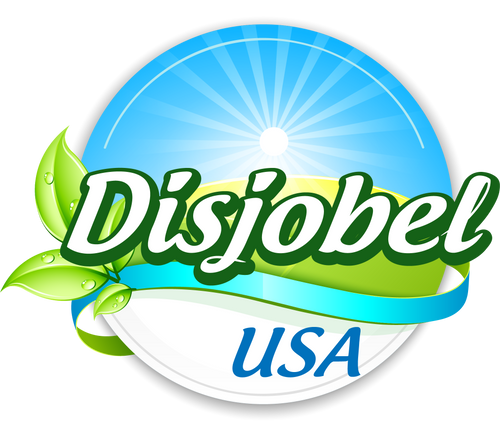When it comes to baking, dry ingredients are the pillars that support the structure, flavor, and texture of baking. Thus, each plays a crucial role in the quality of the final product. Understanding how they work and why it's important to measure and combine them correctly is key to successful baking. Below, we help you demystify them.
1. Flour: The Soul of All Dry Ingredients
Flour is probably the most important ingredient in any baking recipe. Wheat flour is the most commonly used, especially because of its gluten content, which gives structure and elasticity to the dough. In addition, depending on the type of recipe, there are two types of flour that you can use (ESAH, 2023; Enmicasa.com, n.d.):
- Flours with more gluten (strong flours): perfect for baked goods with structures, such as baguette-type breads.
- Softer flours (weak flours): work best for baked goods such as biscuits and cookies.
2. Sugar: An Ingredient that Brings Much More Than Sweetness
Sugar not only provides sweetness, but it is also crucial for texture and color in many recipes. It is one of the dry ingredients that fulfills several essential functions. Among them (ESAH, 2023; Enmicasa.com, n.d.):
- To create a tender crumb and to give a golden color to the pre-baked crust.
- Helps baked goods expand and achieve that desired crispy edge.
3. Yeast: Among the Dry Ingredients for Fluffiness
Yeast is responsible for the growth and fluffiness of baked goods. It is a living fungus that, when fermented, makes the dough light and fluffy. It directly impacts recipes, as it can (Cocinatis, 2021):
- Determine the texture of the product according to the type of yeast: fresh, dry and powdered. Likewise, these directly affect flavor and structure.
- Produce aerated and uniform crumbs according to the fermentation time.
4. Salt: One of the Dry Ingredients for Flavor Control
Salt has a vital function: it enhances the flavor of flour. Its use regulates yeast growth, which allows the dough to develop better flavor and texture. It has important functions such as (Fuchs, 2018):
- Strengthening the gluten network and improving bread structure.
- Balancing the sweetness and highlighting the flavors of recipes of pie, biscuits, and other products.
5. Cocoa Powder: The Magic Touch that Adds Intensity and Texture
Cocoa powder is one of the ingredients that can completely transform any recipe. It also provides an intense flavor without adding moisture. Its impact on the final product stands out in (Scoolinary, 2020):
- Texture and structure. When added to a mix, it directly affects the consistency of the dough.
- A richer and deeper flavor. Its strong flavor can be balanced with other ingredients such as vanilla and some types of sauces.
Tips for Selecting and Storing Dry Ingredients
As is well known, in the bakery industry, the quality of the final product depends on the correct selection and storage of ingredients. Here are some crucial tips (Aprende Institute, n.d.):
- Select fresh flours, free of rancid odors or stains.
- Use fresh and active yeast, and store it in the refrigerator to extend its shelf life.
- Take care of sugar and salt, make sure they are free of moisture.
- Finally, store the ingredients in airtight containers in a cool, dry place.
Dry ingredients in baking are the real heroes behind the success of your desserts. Keep these tips in mind, as small mistakes can have big consequences. Also, measure each dry ingredient well to achieve a balanced batter. And remember, the right combination of ingredients can make the difference between a good dessert and an unforgettable one.
If you are looking for quality ingredients for your business, don't hesitate to get to know our products at Disjobel. That's right, we offer the best raw materials to ensure that your baking is always a success.
Referencias Bibliográficas
Aprende Institute. (n.d.). Todo sobre repostería. https://aprende.com/blog/gastronomia/guia-de-reposteria/
Cocinatis. (2021, November 16). Tipos de levadura y su uso: Cómo hacer levadura fresca con solo 3 ingredientes (harina, cerveza y azúcar). https://www.cocinatis.com/como-cocinar/consejos-trucos/tipos-y-usos-de-la-levadura-de-panaderia-y-quimica.html
Enmicasa. (n.d.). Función de los ingredientes en la repostería. https://enmicasa.com/menu-de-la-semana/weekly-cooking-tips/funcion-de-los-ingredientes-en-la-reposteria
ESAH. (2023, August 28). Ingredientes clave en la repostería. https://www.estudiahosteleria.com/blog/pasteleria-reposteria/ingredientes-clave-reposteria
Fuchs, L. (2018, May 2). ¿Por qué añadimos sal a los dulces? Nueve razones para no olvidar la sal en el postre. Directo al Paladar. https://www.directoalpaladar.com/ingredientes-y-alimentos/por-que-anadimos-sal-a-los-dulces-nueve-razones-para-no-olvidar-la-sal-en-el-postre
Scoolinary. (2020, July 11). El Chocolate en Pastelería: Conviértete en un experto del chocolate. https://blog.scoolinary.com/el-chocolate-en-pasteleria-conviertete-en-un-experto-del-chocolate





















